This blog post commemorates the 100th anniversary of the Sacco-Vanzetti Defense Committee (SVDC), established by Aldino Felicani in May 1920 to defend Nicola Sacco (1891-1927) and Bartolomeo Vanzetti (1888-1927), Italian immigrants arrested for the murders of Frederick Parmenter and Alessandro Berardelli in Braintree, Massachusetts.
The case was highly controversial in its day and remains so today due to accusations of an unfair trial held during the first Red Scare in the United States, when immigrants were viewed with hostility and suspicion. Sacco and Vanzetti were found guilty of the crimes and executed in 1927.
The Boston Public Library's Rare Books & Manuscripts Department holds the Aldino Felicani Sacco-Vanzetti Defense Committee Records, which were donated in 1979 by Felicani's sons.
On April 15, 1920, paymaster Frederick Parmenter and security guard Alessandro Berardelli were robbed and murdered at the Slater-Morrill Shoe Company factory in Braintree, Massachusetts. On May 5, Sacco and Vanzetti were arrested. Four days later, Aldino Felicani (1891-1967) established the Sacco-Vanzetti Defense Committee (SVDC) on May 9. Felicani and Vanzetti had worked together on the anarchist newspaper Cara Compagna and were good friends. Felicani also worked as printer at La Notizia, and he used the newspaper to publicize the arrests and appeal for contributions to the defense fund.
The purpose of the Sacco-Vanzetti Defense Committee was two-fold: to keep the names of Sacco and Vanzetti in the public consciousness and to free them from jail. The committee raised money to pay for the men’s legal expenses and published and disseminated news items that refuted every aspect of prosecution’s case. In addition to serving as the treasurer, Felicani played the role of liaison between a group of Italian anarchists and lawyers they did not trust. Before the end of 1920, Felicani began publishing L’agitazione (The Agitation), the committee's official organ.
In August 1920, Carlo Tresca an Italian anarchist and editor of the socialist newspaper Il Proletario, strongly recommended that Felicani hire Fred Moore, an attorney for the International Workers of the World. Moore had successfully defended union leaders Arturo Giovannitti and Joseph Ettor in the Lawrence textile strike (Bread and Roses Strike). On July 14, 1921 Sacco and Vanzetti were found guilty of robbery and murder.
At the end of 1921, Judge Webster Thayer denied a motion for a new trial. Over the next 18 months, Fred Moore and the defense team filed seven motions for new trials. During that time, the committee, together with radicals, civil rights leaders and activists such as Mary Donovan, Roger Baldwin, Elizabeth Gurley Flynn, and Eugene Lyons, all worked tirelessly to save Sacco and Vanzetti. Moreover, many powerful labor unions contributed to the cause. Click on any of the images below to see larger versions.
Neither Sacco nor Vanzetti ever fully trusted Fred Moore. Tensions between the men, the committee and Moore finally caused him to resign in September 1924. William Thompson became chief counsel. Judge Webster Thayer denied all motions for a new trial on October 1, 1924. For the next three years, the committee was restless in its work. Thompson made numerous attempts to overturn the verdict and the case sparked a strong international response. The death sentence was handed down on April 9, 1927 and was met with world-wide protests. Governor Alvin T. Fuller established a special committee to investigate the possibility of clemency, which was denied. Click on any photos below to see them in a larger size.
Sacco and Vanzetti wrote their last letter to the committee on August 21, 1927 not only to thank the members for their years of effort, but also to console them.
From the day Aldino Felicani founded the SVDC until after the deaths of Sacco and Vanzetti 1927, the SVDC headquarters was located in Boston’s North End, first on 32 Battery Street and then on 256 Hanover Street.
Aldino Felicani Sacco Vanzetti Defense Committee Records at the Boston Public Library
The Aldino Felicani Sacco-Vanzetti Collection spans the years 1914-1967, with the bulk dating from 1920-1927. The collection documents the efforts and activities of the Sacco-Vanzetti Defense Committee including the committee's propaganda campaign, Fred Moore's investigation and defense strategies, post-trial proceedings, and the execution of the two men. The efforts, financial and otherwise, made by labor unions, defense organizations, and individuals on behalf of Sacco and Vanzetti are also documented. In addition, Sacco and Vanzetti’s thoughts regarding the guilty verdict and their impending execution are included.
Aldino Felicani’s correspondence dates from 1914-1967 and chronicles his efforts to prove Sacco and Vanzetti’s innocence both while they were alive and after their deaths. The majority of his correspondence from 1914-1920 is in Italian. It contains letters from several anarchists, among them Tomaso Concordia, Norman Thomas di Giovaini, Carlo Tresca, and Erasmo S. Abate. Also included is correspondence from Elizabeth Gurley Flynn. After 1920, Felicani's correspondence reflects his position as treasurer of the committee, his role in the defense of Sacco and Vanzetti, and his formation of the Sacco-Vanzetti Memorial Committee.
Interspersed with Felicani's correspondence are several documents which contribute to the history of the committee and Felicani’s role in it. These documents include a piece Felicani wrote about Luigia Vanzetti after her death. It is the only documentation that exists in the collection specifically about her (in Italian).The documents also include the history of Gutzon Borglum’s memorial sculpture, and the legal document giving Felicani power of attorney by Luigia Vanzetti. That document gave explicit instructions concerning the dispersal of Bartolomeo’s ashes.
The trial of Sacco and Vanzetti, their deaths, and funeral are documented through photographs, newspaper clippings and press releases, arm bands, and original art work. Also contained in the series are a number of broadsides from unions and Sacco-Vanzetti defense organizations in Europe and South America. These represent the international response to the plight of the two men.
The collection contains correspondence, meeting minutes, publicity scrapbooks, photographs, funeral ribbons, armbands, death masks, financial accounts, legal documents, Fred Moore’s trial notebooks, broadsides, Vanzetti’s manuscripts, press releases, typescripts of various speeches and book chapters.
For more information, please refer to the collection finding aid and selections of digitized materials on Digital Commonwealth.
Related Resources
Harvard Law School Library holds additional material related to the Sacco & Vanzetti case including correspondence, memoranda, reports, legal documents, research notes, newspaper clippings, printed material, photographs, blueprints, and memorabilia. The material falls into two primary groups. The first and more extensive group consists of the Defense's Papers, the second group of the Prosecution's Papers. The groups include transcripts and stenographic records of examination of witnesses, hearings, arguments, trial records, motions for new trials, briefs, exceptions, and other court records. Selections of digitized materials from Harvard are available on Digital Commonwealth.
Selected list for further reading
The Passion Of Sacco And Vanzetti
In Search of Sacco and Vanzetti
Selected art, film and music
Morricone, Ennio. Here's to You (In Concerto - Venezia 10.11.07)

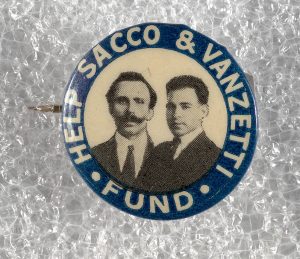


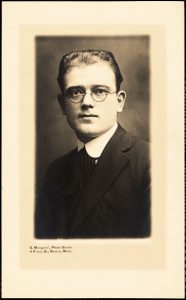

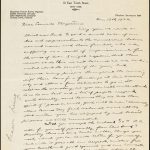
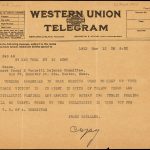
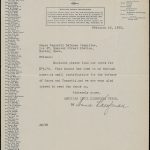
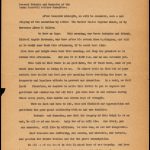
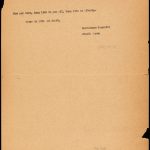
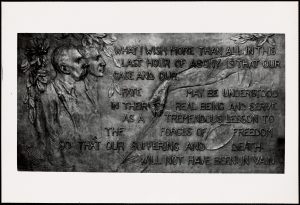

Add a comment to: Save Sacco and Vanzetti!